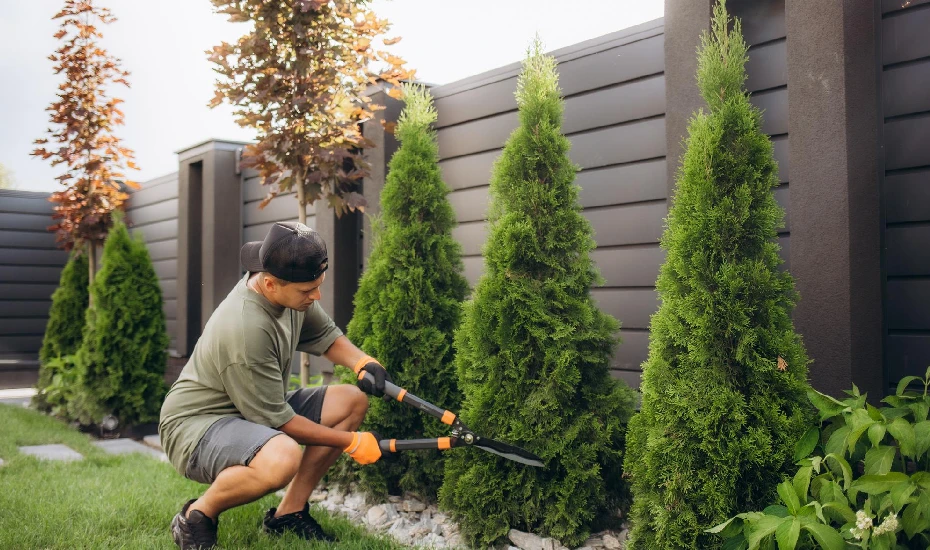Harsh weather can pose a serious threat to your outdoor plants, especially for homeowners looking to maintain a beautiful and thriving landscape design. Whether it’s frost, intense heat, heavy rain, or strong winds, these conditions can cause significant damage if your plants aren’t properly protected. Your garden is not just an outdoor space; it’s an extension of your home’s beauty, and keeping it safe during unpredictable weather is essential.
In this blog, we’ll share practical tips for protecting your outdoor plants from extreme weather, from shielding them against cold snaps to preventing heat stress and water damage. With a few proactive measures, you can ensure your garden stays healthy and vibrant, no matter the season. Ready to safeguard your landscape? Let’s get started!

Weatherproofing Strategies to Protect Your Outdoor Plants
1. Know Your Plants: Understanding the specific needs and tolerances of your plants is essential. Some plants thrive in cold, while others may suffer. Research the hardiness zones for your plants to better prepare for extreme weather.
2. Choose the Right Location: The placement of your plants can significantly affect their health. Select spots that offer some natural protection from harsh winds, intense sun, or heavy rain. Positioning plants near walls, fences, or other structures can provide shelter.

3. Use Mulch: Applying a thick layer of mulch around your plants helps insulate the soil and regulate temperature. It prevents rapid moisture loss and keeps roots warm in winter. Organic mulch, such as wood chips or straw, can also enrich the soil as it breaks down.
4. Water Wisely: Proper watering is crucial for plant health. In hot weather, water early in the morning or late in the evening to minimize evaporation. During colder months, avoid watering when frost is expected, as wet soil can freeze and damage roots.

5. Provide Windbreaks: Strong winds can cause significant stress to plants. Consider adding windbreaks, such as hedges, fences, or garden structures, to shield your plants from harsh gusts. If necessary, you can use temporary wind barriers, like burlap or garden fabric, during severe storms.
6. Use Row Covers: Lightweight row covers protect plants from frost, insects, and harsh sun. They allow light and moisture to penetrate while providing insulation. When frost is expected, drape these covers over vulnerable plants to shield them from cold.
7. Prune and Trim: Regularly pruning your plants helps maintain their health and shape. Removing dead or damaged branches can reduce wind resistance, minimizing potential breakage during storms. Prune before severe weather to prepare plants for the elements.

8. Potting Plants: Consider using pots or containers for plants that require mobility. This allows you to move them indoors or to a sheltered location during extreme weather conditions. Ensure that pots have adequate drainage to prevent waterlogging.
9. Cover with Blankets: For extra frost protection, covering sensitive plants with old blankets or sheets can trap heat during cold nights. Ensure the covers are removed during the day to allow sunlight in, preventing overheating.
10. Plant Hardier Varieties: If you live in an area prone to extreme weather, consider planting varieties that are more resilient. Native plants are often better adapted to local conditions and can withstand fluctuations in temperature and moisture.

Conclusion
In conclusion, protecting your outdoor plants from harsh weather is vital for maintaining a beautiful and thriving landscape. By understanding your plants’ needs, choosing the right locations, and implementing practical strategies such as mulching, watering wisely, and providing windbreaks, you can safeguard your garden against extreme conditions.
Regular maintenance, like pruning and using row covers, further enhances plant resilience. Additionally, consider potting plants for mobility and selecting hardier varieties to withstand local weather fluctuations. With these proactive measures, you can ensure your outdoor space remains healthy and vibrant, regardless of the challenges nature presents.


























